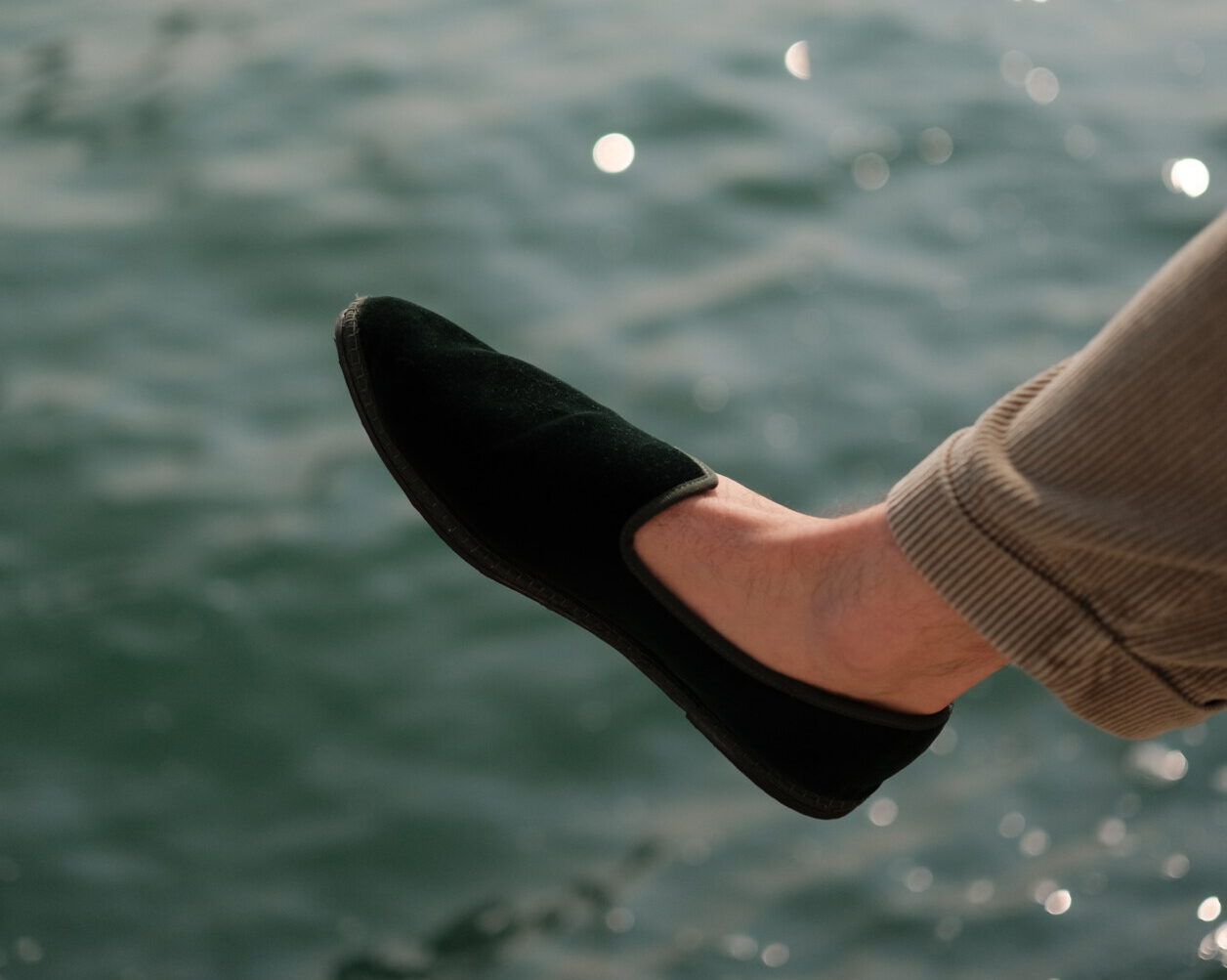Growing up, I was pretty convinced that my mum had magical attributes. In Italy, that’s quite a common conviction to hold about one’s mamma. In the endless list of her superpowers, her ability to appear behind my back–particularly at times when I would have thankfully avoided her gaze–was quite high up. Her voice, coming unannounced from an indefinite point over my head, never failed to surprise me. As most children do, I attributed this wizardry to a grown-up skill I had yet to master. Little did I know that my mother’s secret had more to do with fashion than the supernatural.
Most times, her feet were indeed wrapped in the lavish velvet of the last pair of furlane she had added to her collection. The latter, jealously kept in a large basket next to my parent’s bed, was as much an element of decor as it was a way to make my mother’s morning choice easier. Watching her choose her velvety finishing touch for daily looks–and at night, spying when she came home to switch those with a silky, more glamorous version for evening commitments–quickly made me develop a fixation on these chic slippers. “True Venetians never wear heels,” she would proclaim, heading towards the door without making a sound, the silk of her furlane shining through the door.
Furlane–also called friulane or papusse–are delicate, handmade slippers, traditionally made of velvet, though you may be able to find versions made of linen, silk or wool. Slim and flat-bottomed, the shoes usually feature a rounded toe and convex tongue and can be found in all colours of the rainbow. Now a truly Venetian obsession–born out of the love of velvet and sneaking around (I’m pretty sure if Veronica Franco could have gotten her hands on a pair she would have never taken them off)–the it-girls of slippers were invented in Friuli-Venezia Giulia, a region neighbouring Venice, in the 19th century. Local girls were a century or two ahead of their fashion times as they used the friulane, the most elegant shoes in their wardrobes, to attend festivities and, notably, during their own weddings. Since every furlana was made out of leftover materials, every pair was unique and–little did they know–wonderfully sustainable.
Later, Venetians couldn’t stand by and leave their neighbours the chicest slippers around. Gondoliers began using them–the only footwear available at the time–during WWII, finding that the shoes’ soles–originally made out of recycled rubber, often from bicycles’ tires–did not damage their beloved wooden boats. The furlane quickly became the Grand Canal’s rulers’ shoes of choice: still today, the shoes are known as the gondoliers’. As you wander through the narrow canals of Venice, you can see the striped canalmen prancing in their velvet slippers across their glossed ebony gondolas.

Photo by Giacomo Gandola and Andrian Chicu
Even though my mother claims she has worn friulane her whole life–in case you were wondering, yes, she wore her beloved slippers to her wedding because, again, Venetians do not wear heels under any circumstances!–the shoes that are nowadays known as the gondoliers’ came back in fashion in 2017, when Kate Moss was spotted rocking a red pair from Vibi Venezia. A well-deserved revival, that is yet to see its climax, followed. Furlane made its way onto more and more fashion pages as other celebrities–Katie Holmes, George Clooney, Tom Ford–followed suit. Established brands such as Giorgio Armani included them in their collections, and shoe-lines such as Le Monde Beryl were launched. Although these slippers may now be found on red carpets, they’re still distinctively Venetian–worn not only by the gondoliers, but by students hanging around cicchetti bars for an ombra (or two) and by locals on their own barchini.
Much can be said about the current wave of furlane mania, yet we all know it comes down to the rise to fame of Piedàterre. Near the Rialto bridge, the tiny furlane shop that has something of a Parisian twist in its décor (and in its sales-assistant’s accent) was every Venetian woman’s private affair. Their textiles are so luxurious, their colours so varied and their models so chic that rumours about a secret French origin of their velvet slippers came about. The shop has recently been modernised, yet the secretive atmosphere can still be perceived between one stack and another of the colourful velvet piled along aquamarine walls.
Another celebrated keeper of these understated shoes can be found in a boutique on the Rialto bridge’s steps, Rivo Altus (which still uses recycled bicycle tires for the soles). Here, the kind Venetian shopkeeper will introduce you to the work of craftsmen who are safekeeping the old traditions from Friuli. If you are looking for tradition with a modern twist instead, head to Vibi Venezia’s website for one-of-a-kind furlane-meets-sneakers creations. What’s certain is that once you have experienced the soundless walk of these velvety treasures, you will never go back. You can take my mother’s word for it.








